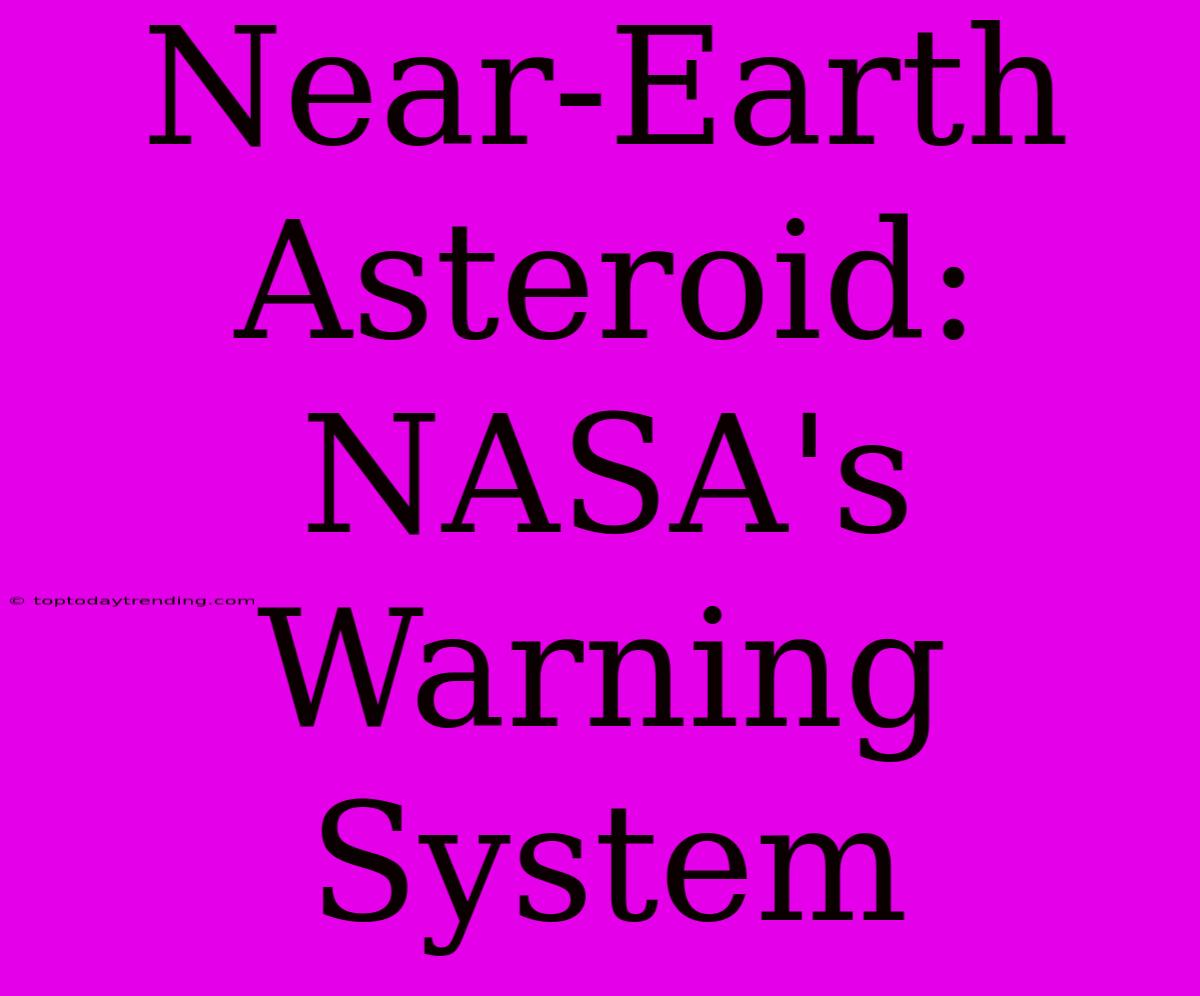Near-Earth Asteroid: NASA's Warning System
The vastness of space holds both wonder and potential danger. One such danger comes from Near-Earth Asteroids (NEAs), celestial bodies that orbit the sun and pass close to Earth's path. While most pose no immediate threat, the possibility of a catastrophic impact remains a concern.
To mitigate this risk, NASA has established a comprehensive warning system to detect, track, and characterize NEAs. This system relies on a network of powerful telescopes, sophisticated algorithms, and a team of dedicated scientists who work tirelessly to ensure our planet's safety.
Understanding the Threat
NEAs are classified based on their size and proximity to Earth. While small asteroids are more common and pose less of a threat, larger asteroids could cause significant damage if they impact our planet. The potential for a catastrophic event is not to be taken lightly.
Here's a breakdown of the potential consequences:
- Small asteroids (less than 10 meters): These often burn up in the atmosphere, creating spectacular fireballs.
- Medium-sized asteroids (10-100 meters): These can cause localized damage upon impact, potentially creating craters or triggering shockwaves.
- Large asteroids (over 100 meters): These can cause significant devastation over a wide area, potentially triggering tsunamis, earthquakes, and global climate change.
NASA's Defense Strategy
NASA's Planetary Defense Coordination Office (PDCO) is responsible for leading the agency's efforts to protect Earth from potential asteroid impacts. The PDCO utilizes a multifaceted approach:
1. Detection and Tracking:
- Telescopes: Several ground-based telescopes, such as the Panoramic Survey Telescope and Rapid Response System (Pan-STARRS) and the Catalina Sky Survey, are actively scanning the skies for NEAs.
- Space-based telescopes: The NEOWISE mission uses a space-based telescope to detect and track NEAs.
2. Characterization and Assessment:
- Observations: Data collected by telescopes is used to determine the size, shape, composition, and trajectory of NEAs.
- Computer modeling: Sophisticated software simulates potential impact scenarios and helps predict the probability of an impact.
3. Mitigation and Response:
- Early warning: Timely detection and tracking allow for the development of mitigation strategies.
- Deflection techniques: NASA is developing technologies such as kinetic impactors and gravity tractors to deflect an asteroid's trajectory.
- Emergency preparedness: Plans are in place to evacuate and provide assistance in the event of a potential impact.
The Importance of Continuous Research
While NASA's warning system has made significant progress in detecting and tracking NEAs, there's always room for improvement. Continuous research and development are essential to enhance the system's capabilities.
Key areas of focus include:
- Developing more powerful telescopes: This will allow for the detection of smaller and more distant NEAs.
- Improving tracking accuracy: More precise tracking data will lead to more accurate impact predictions.
- Exploring advanced deflection techniques: This will ensure we have multiple options for mitigating potential threats.
The Future of Planetary Defense
The threat of asteroid impact is real, but it's not insurmountable. Through continuous research, collaboration, and the development of innovative technologies, NASA is striving to protect our planet from potential threats. The future of planetary defense lies in proactive vigilance and a collective commitment to safeguarding our home.

